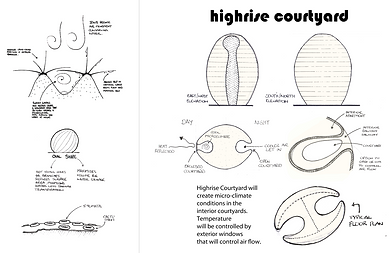Slugs

Cacti must conserve water and energy at all cost, which means that mastering the art of temperature regulation is essential. Building in deserts across the world, architects have a lot to learn from these succulents to craft a more sustainable way of living.
Biomimetic Designs
Cooling-Efficient Buildings
The new bullding to house Qatar's Minister of Municipal Affairs & Agriculture (MMAA)was modelled after a barrel cactus. The reason for this mimicry was to have a building made specifically to deal with the hot aridity of Qatar's desert environment. The building has sun shades on the windows that can be opened or closed to suit the prevailing temperature, which is parallel to how cacti perform transpiration at night rather than during the day in order to retain water.
Not only does the building focus on reducing energy needed for cooling, it also strives to re-purpose some of its waste and create a closed loop system. This is taking place in the attached dome at the base of the building, which will serve as a greenhouse, fed by the grey-water from the building. The hope is that by setting up a series of natural ecological services throughout the building, waste water will be filtered and available for use again without leaving the closed-loop system.
This building, while the only one of its kind in existence, is reflective of a larger architectural community that is fascinated with how mimicking cacti may be the key to unlocking the next generation of temperature-resilient buildings.

The Science Behind Barrel Cacti
The relationship cacti shares with water is very strained, given that deserts receive less than 25 cm of rain on average annually. This is why cacti perform respiration at night, because doing so requires the plant to open its stomata, risking a higher rate of transpiration. Another factor for the rate of transpiration is the air flow experienced on the surface of the cacti. By evolving to have ridges and criss-crossing needles, those valleys of the pleated surfaces served as a sort of micro-climate, conserving water even further.
As far as drawing upon the cacti to process water, by re-organizing the natural resources it is possible to transform water from dirty to clean. In one of the most basic solutions, waste-water pulses through a minimum of three different ecological systems that process and filter it in different ways. Each ecological system is isolated from the others so that it can treat waste-water based on its own unique needs, after which the water cycles on to the next community. The technology would use helpful bacteria, fungi, plants, snails, clams and fish that thrive by breaking down and digesting pollutants.

Spark your Imagination: Explore More Articles
Architectural Inspiration from Barrel Cacti
Cacti Shape Enhances Heat Radiation
